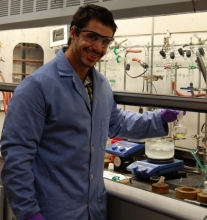
Major:
University:
Mentor(s):
Faculty Sponsor(s):
Faculty Sponsor's Department(s):
Project Title:
Project Description:
Radical polymerizations are widely used in both industry and academic laboratories to synthesize a wide variety of polymeric materials. The demand for functionalized, well-defined materials requires a polymerization process, which has control over polydispersity (PDI), molecular weight and architecture. One way to achieve controlled radical polymerizations is called stable free radical mediated polymerization (SFRP). The most common example of a SFRP is nitroxide-mediated polymerization (NMP), which, although used extensively in industry, suffers from several drawbacks1. Other controlled radical techniques including atom transfer radical polymerization and radical addition, fragmentation and transfer (RAFT) are limited as well2. With the above in mind, there is still a need to investigate new mediators. Recently, McGrath et al. were the first to characterize a stable sulfinyl radical, which was persistent in solution for several days. Due to its surprising stability, the 9-triptycene sulfinyl radical has the potential to be an effective mediator for free-radical mediated polymerizations. Here, we report the progress towards 9-triptycenesulfenic acid, which is the precursor for the sulfinyl radical and has the potential to be transformed into a unimer.
References:
- Hawker, C. J.; Bosman, A. W.; Harth, E. Chem. Rev. 2001, 101, 3661-3688
- Odian, G. In Principles of Polymerization; fourth Ed.; Wiley: New York, 2004.
